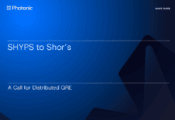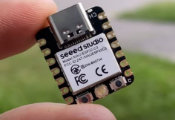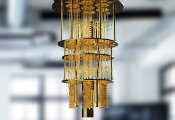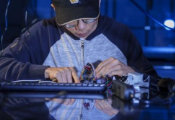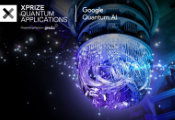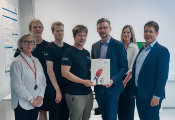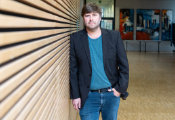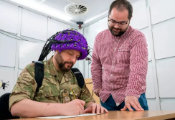QUIET: A Place to Study Qubits Shielded From the Effects of Cosmic Rays
Deep under the ground at Fermi National Accelerator Laboratory is a brand-new quantum sensor and computing research center called QUIET, and at the surface — 100 meters above — sits its twin called LOUD.
The quantum research infrastructure is among the first of its kind to be operational in the United States. Together, QUIET and LOUD will allow for controlled experiments with quantum sensors to make direct comparisons between an environment with significantly reduced cosmic ray interference and the ambient environment on Earth’s surface.
Quantum information stored in qubits is fragile: Interactions from the environment cause the quantum states to decohere and eventually collapse into a single state. Because superconducting qubits are negatively impacted by cosmic rays and associated energetic particles like muons, understanding how this impacts these delicate devices is crucial. The knowledge gained could enable researchers to better manipulate and protect quantum states and even contribute to a further range of applications, including the detection of dark matter.
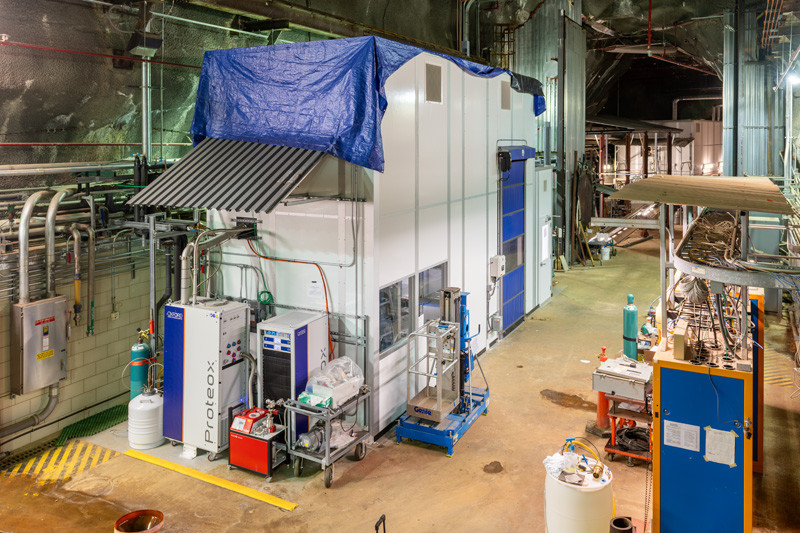
One goal of QUIET is to understand the difference between the impact of gamma rays, X-rays, muons, and beta particles on superconducting qubits. There are big differences in how those particles interact in a material. For example, a beta particle will interact with the atoms on the surface of a material, while a muon will pass through, depositing energy over a longer distance and deeper into the material. However, little is currently known about the nuances of how those particles interact with superconducting qubits.
Utilizing QUIET to understand the impact of high-energy stray particles on superconducting qubits could allow researchers to construct new models that are less sensitive to radiation. This research involves taking qubits that have been tested at the surface and then moving them underground — where the muon and cosmic ray flux is much smaller — to determine how their performance changes. Potential new models could work one of two ways: researchers could either focus on shielding qubits from the interference, or design devices that are not sensitive to it in the first place.
Alternatively, using qubits as sensors for making new detectors that are hypersensitive to radiation could also be useful for the detection of dark matter. Currently, dark matter detection is limited by most techniques sensitive only above the electron volt scale, which represents the energy gained when an electron charge is accelerated through a potential difference of one volt. These new hypersensitive quantum sensors that could detect below the eV scale may allow scientists to test a wider suite of theoretical models for dark matter.
Quantum and dark matter scientists around the world are planning similar underground quantum testing facilities in deep mines. For example, scientists with Fermilab’s Superconducting Quantum Materials and Systems Center have started testing qubits in the laboratory built beneath Gran Sasso mountain in Italy. While QUIET is not as deep, it’s accessibility provides a great advantage.
Additionally, other national laboratories have underground spaces. QUIET provides a 99% reduction in muon flux and gives scientists the opportunity to take advantage of this easily accessible underground resource for cutting edge science.
QUIET — which took two and a half years to build — is currently in its commissioning phase and should be operational in the next few months. Scientists have installed and tested a dilution refrigerator, which is necessary for the deployment of superconducting qubits. They are also setting up radio frequency electronics, which superconducting qubits use to control and read out their quantum states. Many of the individual components of the research space, such as the fridge and electronics, are commercial items that were purchased for both QUIET and LOUD to provide direct one-to-one comparisons.
QUIET and LOUD are funded through the QSC, one of five DOE National Quantum Information Science Research Centers established to support the National Quantum Initiative.

